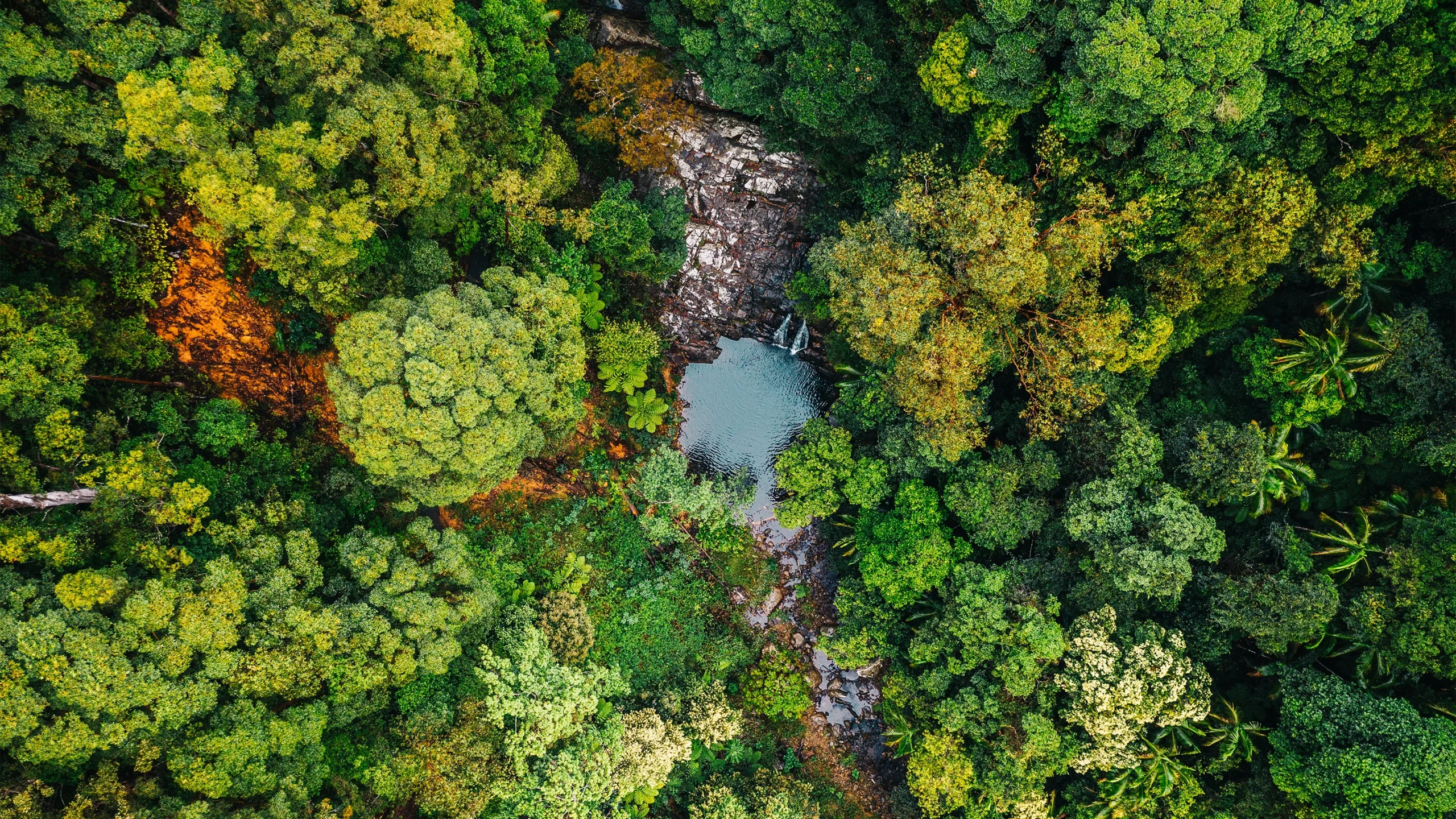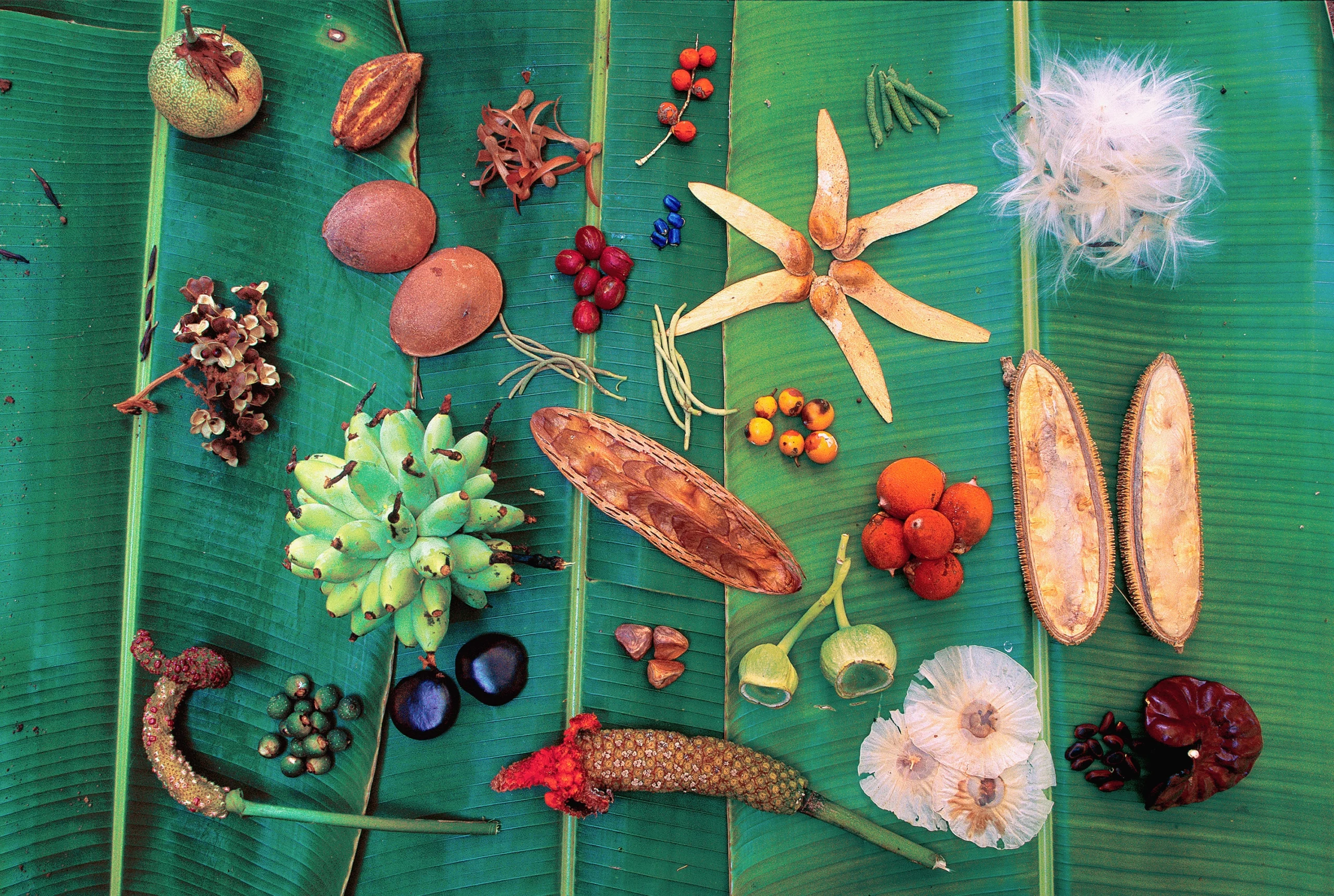‘Species Repulsion’ Enables High Biodiversity in Tropical Trees

The effect of “species-specific repulsion” is not immediately evident in the distribution of trees in this aerial view of the canopy of the Barro Colorado Island forest, but models suggest that it contributes to the observed patterns.
Josh Withers/iStock
Introduction
For ecologists, tropical rainforests hold many enigmas. A single hectare can contain hundreds of tree species, far more than in forests closer to the poles. Somehow these species coexist in such dizzying abundance that, as naturalists and ecologists have sometimes noted, tropical forests can feel like botanical gardens, where every plant is something new.
For such throngs of species to be packed so densely, they must coexist in a very particular balance. Evolution seems not to favor situations where any single species thrives too aggressively, instead favoring ones where organisms are surrounded by species other than their own. Squaring those facts with what’s understood about how species distribute themselves, compete and influence one another is a challenge.
To study this extraordinary diversity, years ago scientists began to set up plots of forest where they could record and track the location and condition of every single tree over decades. One of the earliest such plots, at Barro Colorado Island (BCI) in Panama, is 500 meters wide by 1,000 meters long (the area of about 70 soccer fields) and contains more than 300 species. Since 1980, researchers around the world have pored over the detailed records of its inhabitants.
In a paper recently published in Science, researchers at the University of Texas, Austin modeled several distribution scenarios and compared them to BCI data. They found that patterns in the dispersal of seeds on the wind or by birds and other wildlife, as well as more random processes, were not sufficient to explain the distribution of adult trees in the forest. They suggest that this is evidence for “species-specific repulsion,” a long-standing theory that trees of the same species get naturally spaced out because the environment immediately around a parent tree is specifically hostile to the tree’s own offspring.
Social Distancing for Trees
This idea of repulsion — formally known as conspecific negative density dependence, or CNDD — goes back to the 1970s when the ecologists Daniel Janzen and Joseph Connell independently suggested that insects, herbivores and pathogens that prey selectively on one species could make the area around an adult tree dangerous for its seeds. Other species would not be prevented as effectively from growing in the area, though they would still be limited by nonspecific problems like a lack of sunlight under an adult tree’s canopy. The result would be that adult trees of a species would tend to maintain a kind of minimum “social distance” from each other.
Tests in recent decades, primarily on seedlings, provide support for CNDD, said Michael Kalyuzhny, the lead author of the new paper, whose work as a postdoctoral researcher at the University of Texas, Austin, has led to his now starting a lab at the Hebrew University of Jerusalem. Seeds often don’t grow as well in soil taken from spots near their parent trees as they do in soil from spots near unrelated trees.
Yet even a cursory look at the BCI data shows that adult trees in that forest do not seem to be repelling one another. Instead, the trees cluster, forming loose groups of the same species throughout the plot.
Kalyuzhny and Annette Ostling, the community ecologist who leads the lab where Kalyuzhny works, set out to model different scenarios that might explain the observed tree distributions, to learn whether something might be obscuring the role of CNDD in the forest.
Chance alone wasn’t the answer: When they ran a null model in which trees were just spaced randomly, the adult trees in a species would get too spread out.
So the researchers introduced the effect of seed dispersal into their models, which could be by wind and by birds and other creatures. Helene Muller-Landau and her collaborators at BCI have made estimates of how far a seed can travel from its source within the 50-hectare plot, using nets that capture seeds as they drift to the forest floor. The seeds are regularly collected and the distance from their parents is calculated. Kalyuzhny and his colleagues drew on that data to model tree arrangements shaped only by dispersal limitation.

Adult trees in tropical forests produce seeds and seed pods that have wildly diverse shapes, which allows them to be spread by wind or by animals in different ways.
Christian Ziegler
But that model produced trees that were too tightly clumped. Something seemed to be acting on the distribution produced by dispersal limitation, spreading the trees out. “Something is creating this repulsion. And we cannot think of anything other than CNDD,” Kalyuzhny said.
When the researchers calculated how specific the repulsion was — how much worse it was for a tree to be near its own species rather than another — they found that it would have had to be quite strong to produce the observed pattern. That confirmed an essential point of Janzen and Connell’s ideas: “Whatever creates CNDD has to be species specific,” Kalyuzhny said.
The Importance of Rare Events
Ryan Chisholm, a theoretical ecologist and professor at the National University of Singapore who studies tropical tree distribution, agrees that Kalyuzhny’s findings fit with previous work on CNDD. He suggests, however, that the models might be underestimating how far dispersal mechanisms can spread seeds. If far-spreading events are rare, for example, they could be hard to see in the seed-trap data. And if seeds are carried farther than researchers realize, that could account for the more spread-out clumps of trees in the forests without need for repulsion.
“What they are saying here is that according to their dispersal limitation model, the patterns they observe are impossible,” Chisholm said. “I would say we don’t know enough to say that yet.”
Rare events have been important in the dispersal of species of all kinds: Monkeys, for example, are thought to have arrived in the Americas from Africa on rafts of vegetation, a stupendously unlikely event that nevertheless had significant consequences. “Occasionally you’re going to get that one bird that carries the seed very far, or gets caught by the wind and goes for an adventure,” Chisholm said. He points out that seed distribution seems to have a very fat tail at the end — it’s not a bell curve, as nonexperts might think — and that we don’t know its shape well enough yet.
He points out that we don’t know the shape of the curve for seed distribution well enough yet —it’s not a simple bell curve, as nonexperts might think, because it seems to have a very “fat tail” at the end.
If ecologists had data on a far larger scale than 50 hectares, something that’s promised by new survey techniques where scientists can count trees from the air, a new vision might emerge. It might be possible to see patterns that can’t be seen currently, which might change the understanding of the role CNDD and seed dispersal limitation play in the arrangement of forests. “This era of just staring at a 50-hectare plot will seem extremely quaint, like a hand-held telescope compared to the Hubble,” Chisholm said.
For now, Kalyuzhny and colleagues plan to perform similar analyses on other study plots around the world to see what patterns emerge — there are now more than 70 sites around the globe with plots up to 50 hectares in size, all monitored like the plot at BCI. They’ve also run simulations where they adjust the range of CNDD, and they have found that even repulsion over relatively short distances can result in large effects at the scale of the forest.
“I repulse my neighbors, and they repulse their neighbors, and they repulse their neighbors,” Kalyuzhny said, describing how large-scale patterns can emerge from small-scale actions. “The forest is a messy crystal.”



